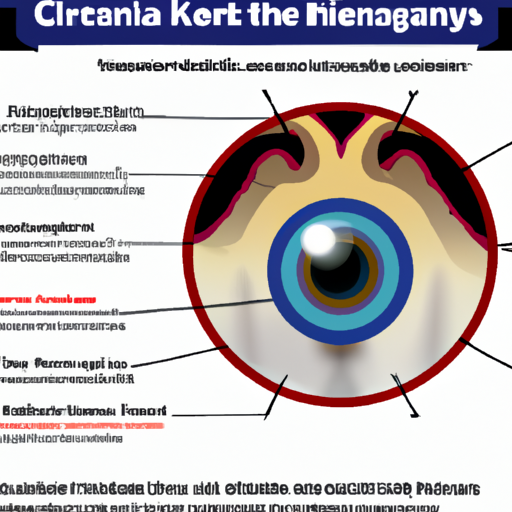Pigmentary Keratitis, a condition that affects our furry friends, can be disconcerting for any caregiver. This condition causes brown pigment to develop on the surface of their eyes, often leading to impaired vision. But what exactly causes this condition, and how can we as caregivers help our pets?
Understanding Pigmentary Keratitis
Pigmentary Keratitis is essentially a response to chronic irritation or inflammation. The cornea, the clear outer layer of the eye, reacts to this irritation by producing melanin, a pigment that appears brown.
The causes of this irritation can be varied, but the following are commonly encountered:
- Exposure to wind, dust or UV radiation
- Chronic dry eye
- Physical trauma to the eye
- Allergies
- Certain breed predispositions
It’s essential to identify and address these causes to prevent further progression of the condition.
Symptoms to Look Out For
Identifying Pigmentary Keratitis in its early stages can make a significant difference in managing the condition. As a caregiver, keep a keen eye on the following symptoms:
- A noticeable brown discoloration on the cornea
- Excessive blinking or squinting
- Redness or inflammation around the eye
- Tear staining
- Changes in behavior indicating discomfort
If you notice any of these symptoms, it’s time to consult your veterinarian.
Prevention and Management
While some causes of Pigmentary Keratitis like breed predispositions are unavoidable, you can take steps to reduce the risk of other triggers.
- Regular eye cleaning: This helps remove any irritants and keep the eye moist.
- Protecting against UV radiation: Doggy sunglasses or avoiding midday walks can be beneficial.
- Regular vet check-ups: Early detection is key in managing this condition.
Treatment Options
Once diagnosed, your vet may suggest various treatment options depending on the severity and underlying cause. These may include:
- Topical steroid or anti-inflammatory drops
- Artificial tear supplements
- Surgery in severe cases
Breed Predisposition
Certain breeds are more prone to developing Pigmentary Keratitis due to their physical characteristics. Here’s a simple table showing some of these breeds:
| Breed | Reason |
|---|---|
| Pugs | Protruding eyes, shallow eye sockets |
| Bulldogs | Poor tear production, skin folds |
| Shih Tzus | Hair irritation, shallow eye sockets |
FAQs
1. Is Pigmentary Keratitis painful for my dog?
While the condition itself may not cause pain, the underlying causes like dry eye or physical trauma can cause discomfort.
2. Can Pigmentary Keratitis lead to blindness?
Yes, if left untreated, the pigmentation can cover the cornea and impair vision.
3. Can the condition be reversed?
In some cases, early intervention and treatment can help reduce the pigmentation.
4. Is this condition prevalent only in older dogs?
No, Pigmentary Keratitis can occur at any age, although it’s more common in middle-aged dogs.
Remember, as a caregiver, your vigilance and prompt actions can greatly help manage and possibly prevent this condition.



